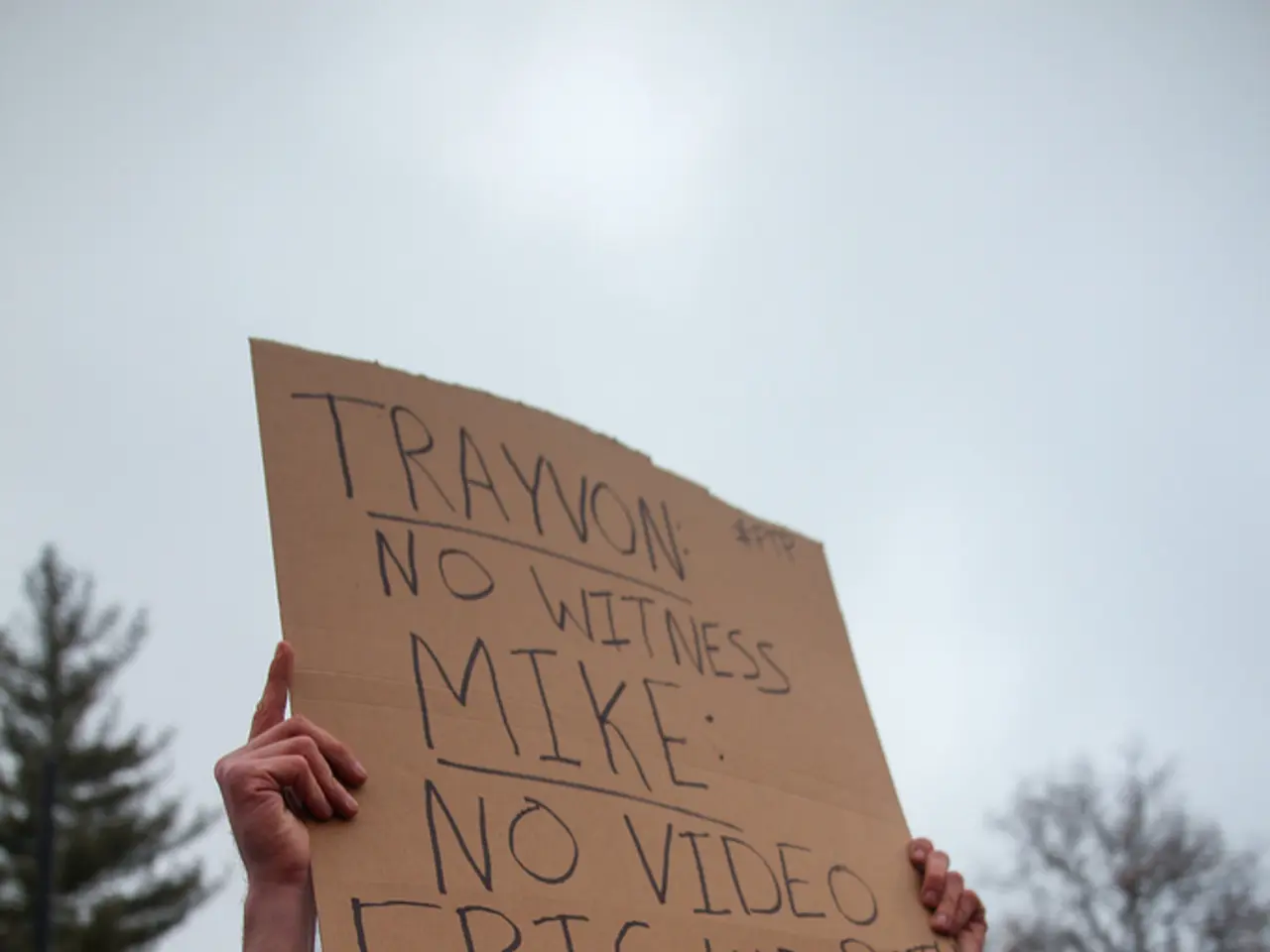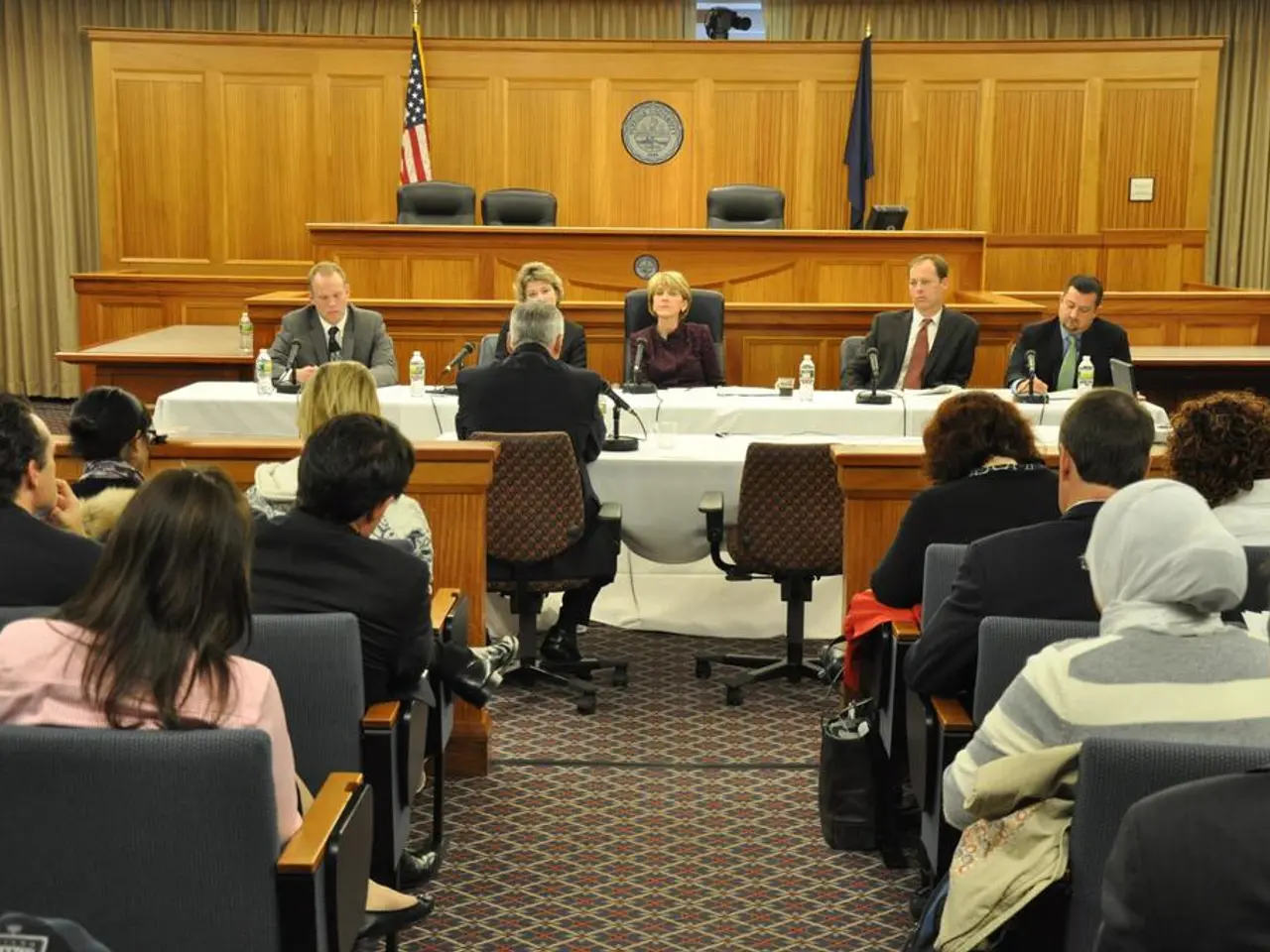Suspect in Montana's bar shooting spree apprehended, putting an end to a week long manhunt
In a dramatic turn of events, Michael Paul Brown, a 45-year-old resident of Montana, was apprehended on Friday following a manhunt that gripped the state. The capture occurred near the area where authorities had focused their search following a shooting at The Owl Bar in Anaconda, Montana, which took place on August 1 and resulted in the tragic deaths of four individuals: Nancy Lauretta Kelley, 64; Daniel Edwin Baillie, 59; David Allen Leach, 70; and Tony Wayne Palm, 74.
According to Lee Johnson, administrator of the Montana Division of Criminal Investigation, Brown was found at a structure near The Ranch Bar. Brown, who served in the Army as an armor crewman from 2001 to 2005 and deployed to Iraq from early 2004 until March 2005, was also a member of the Montana National Guard from 2006 to 2009.
Approximately 130 law enforcement officers made a hard push on Thursday after getting tips that helped verify they were looking in the right area. Brown was communicative and able to identify himself to the search team. He was taken to a hospital for treatment and was medically cleared earlier on Friday.
The capture was the result of a "Herculean effort" from law enforcement officers across the state. Montana Attorney General Austin Knudsen stated that Brown was not hiding, but was "flushed out" during the search. Eric Hempstead, owner of The Ranch Bar, described an intense law enforcement presence in the area over the last couple of days, involving search dogs and drones.
However, the capture of Michael Paul Brown raises questions about Montana's stance on red flag laws. Montana does not have red flag laws, and in fact, passed legislation in 2025 that bans local governments from enacting red flag laws or extreme risk protection orders (ERPOs) anywhere in the state. This anti-red flag law prohibits cities, counties, and municipalities from issuing orders to temporarily remove firearms from individuals deemed a risk, effectively preventing gun seizures through this legal mechanism in Montana.
Because Montana has no red flag laws, there is no formal process in the state for gun seizures based on perceived risk without a criminal conviction. This contrasts with 21 other states and D.C. that have implemented red flag laws which can reduce gun violence risk by allowing temporary removal of firearms after a court process.
The shooting rattled the tight-knit town of Anaconda, which has approximately 9,000 residents. Brown's niece mentioned that he has struggled with mental illness for years and that family members repeatedly sought help for him. Bar owners from around the state have pledged to donate a portion of sales to a fund for each of the victims' families.
It is not immediately clear if Brown has legal representation. His mental state began to deteriorate, with him experiencing delusions and often not knowing his whereabouts. Brown kept guns in his home, and family members had requested wellness checks when they believed he was becoming a danger to himself, but Brown told authorities he was fine. A 57-square-kilometer stretch of forest was closed as authorities searched for the suspect, Michael Paul Brown.
[1] Montana's Anti-Red Flag Law [2] The Impact of Red Flag Laws [3] Montana's Ban on Red Flag Laws [4] Red Flag Laws in the U.S. [5] Montana's 2025 Red Flag Law Ban
- The capture of Michael Paul Brown, who was involved in a shooting at The Owl Bar in Anaconda, Montana, has sparked a debate about the state's stance on red flag laws, specifically the ban on such laws enacted in 2025.
- Red flag laws, implemented in 21 states and D.C., allow for temporary firearm removal after a court process, a mechanism that Montana currently lacks due to its ban on these laws.
- Montana's ban on red flag laws prevents cities, counties, and municipalities from issuing orders to temporarily remove firearms from individuals deemed a risk, as opposed to states with red flag laws which can potentially reduce gun violence risk.








